 Mike Self
.
May 03, 2022
.
Features
Mike Self
.
May 03, 2022
.
Features
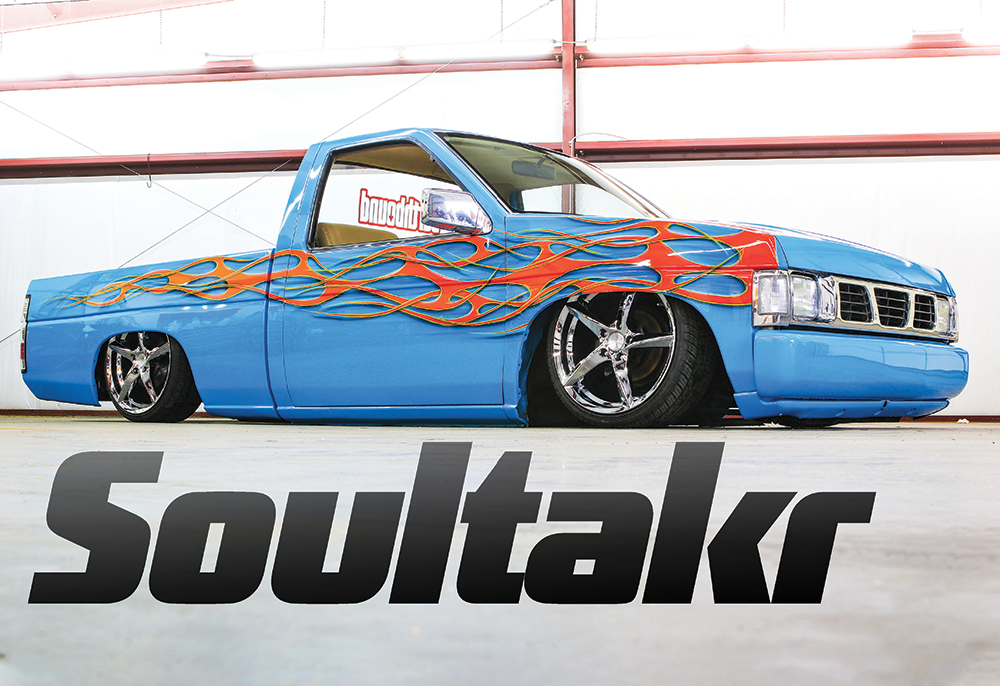
WE’VE ALL HEARD OF ONCE-LOVED RIDES BEING ABANDONED BY THEIR OWNERS FOR ONE REASON OR ANOTHER. Unfortunately, it’s a common occurrence, especially when it comes to custom vehicles like Nissan hardbody mini truck. All too often, budgets and time constraints are overextended, leaving a pile of parts to rot away in a garage, shop or, in this case, a field.
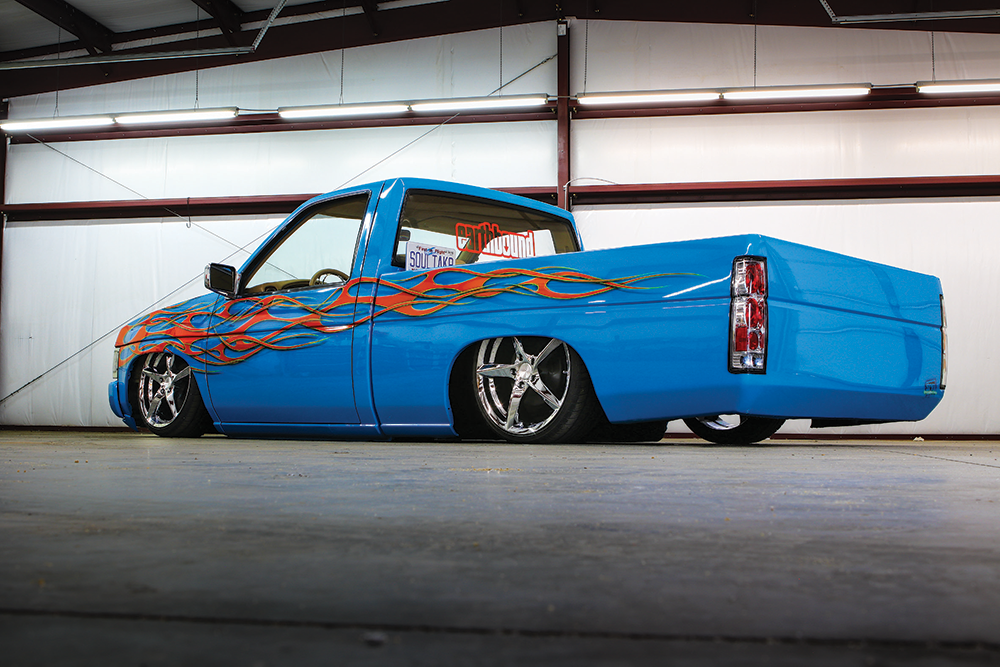
James White of Hamlet, North Carolina, was window-shopping online when he came across a ’96 Nissan Hardbody mini truck that was in dire need of rescuing. The most recent owner had fallen on hard times and needed to get out from underneath the project, especially since it had been taken out of a body shop and stored in a field under a tree! But it had a few things going for it that piqued James’ interest. For one, it had been body-dropped by legendary mini-truck builder Jody Hall, and it was already bagged and four-linked. To top it off, the custom bodywork and flamed paint job by Jody Goodwill of SRM Paintwerks, although filthy, were still in great shape overall. So, a deal was struck, and James brought it home.
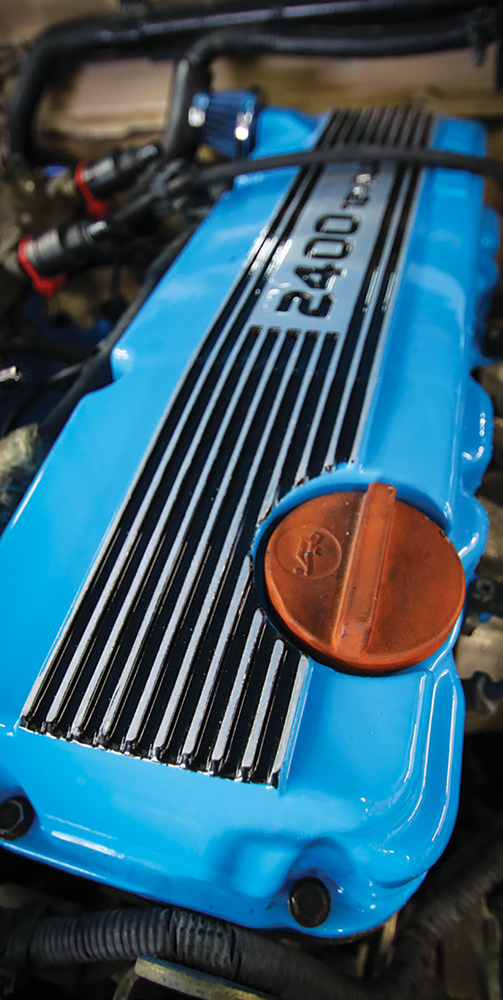
Wanting to keep the bones of the truck intact but add his own personal touches, James shaved the wiper cowl, swapped out the front bumper and grille, and had the paint fully restored by Chris Coker of The Paint Shack. Chris also added tan spray-in bedliner in both the engine bay and bed for the perfect color contrast.
A LOT OF OLDER BUILDS DESERVE A SECOND CHANCE AT LIFE, AND JAMES’ HARDBODY SHOULD BE AN INSPIRATION TO US ALL TO BE ON THE LOOKOUT FOR THAT LONG-FORGOTTEN DIAMOND IN THE ROUGH.
The air ride was also in fine shape, but was due for some fresh ‘bags, so James had Pee Dee Customs install new Slam Specialties air springs at each corner. As you’ll notice by the lug count, the Nissan mini truck had received a five-lug swap some time in the past, making wheel choices plentiful. The old wheels were also a bit dated, so James scored some 18-inch MKW M-120 wheels on rubber bands from T’s Wheels & Tires. We think James made the right choice, don’t you?
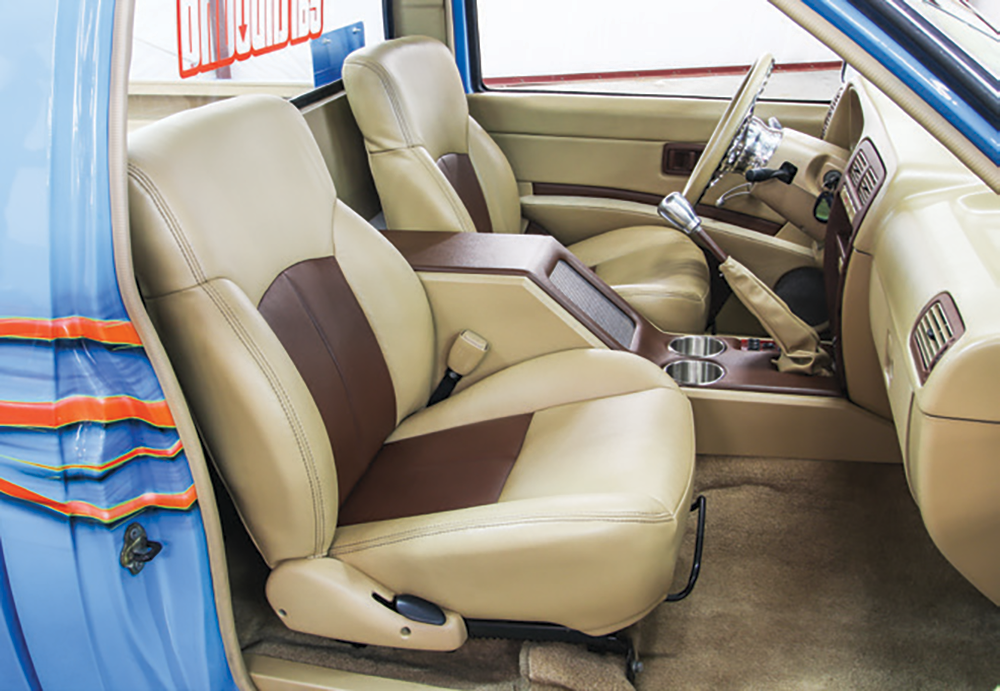
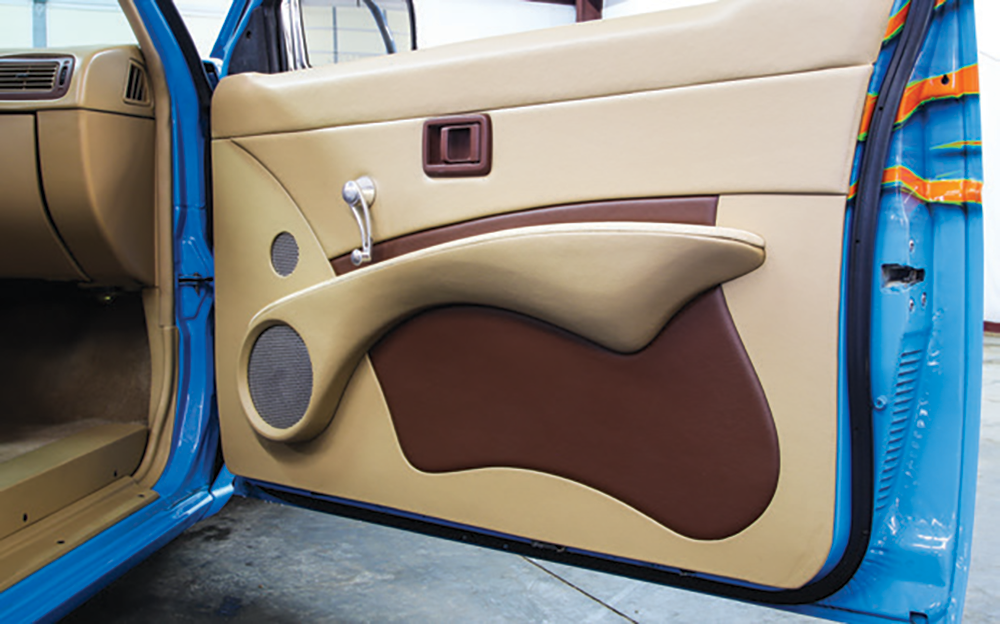
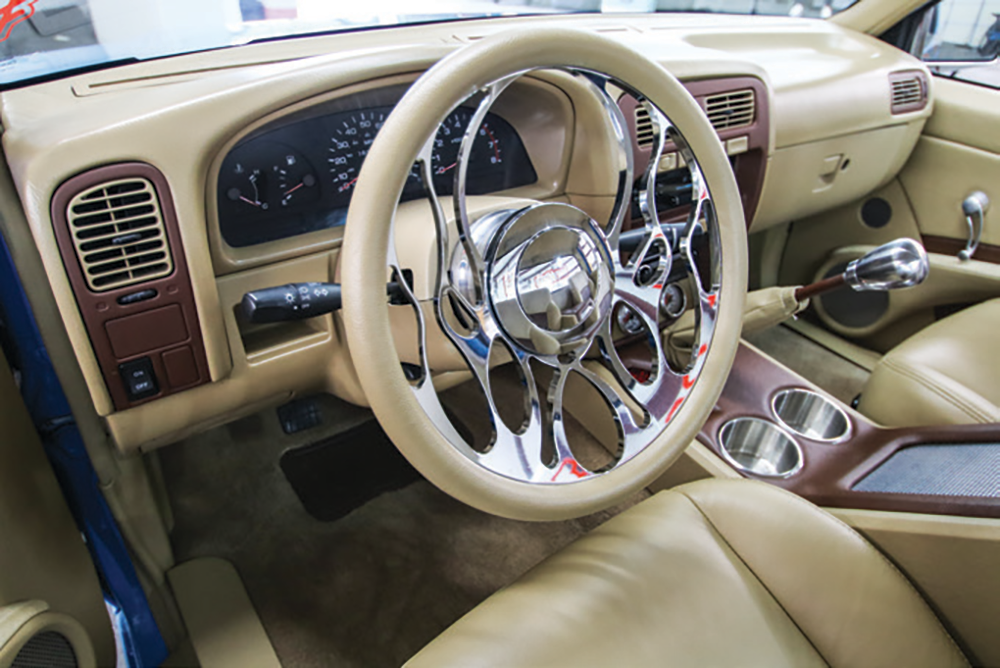
The original KA24E remains in the truck, but James swapped out the original intake manifold for one out of an early 240SX and had Chris Coker color match both the manifold and the valve cover to the truck’s Porsche Riviera Blue paint job.
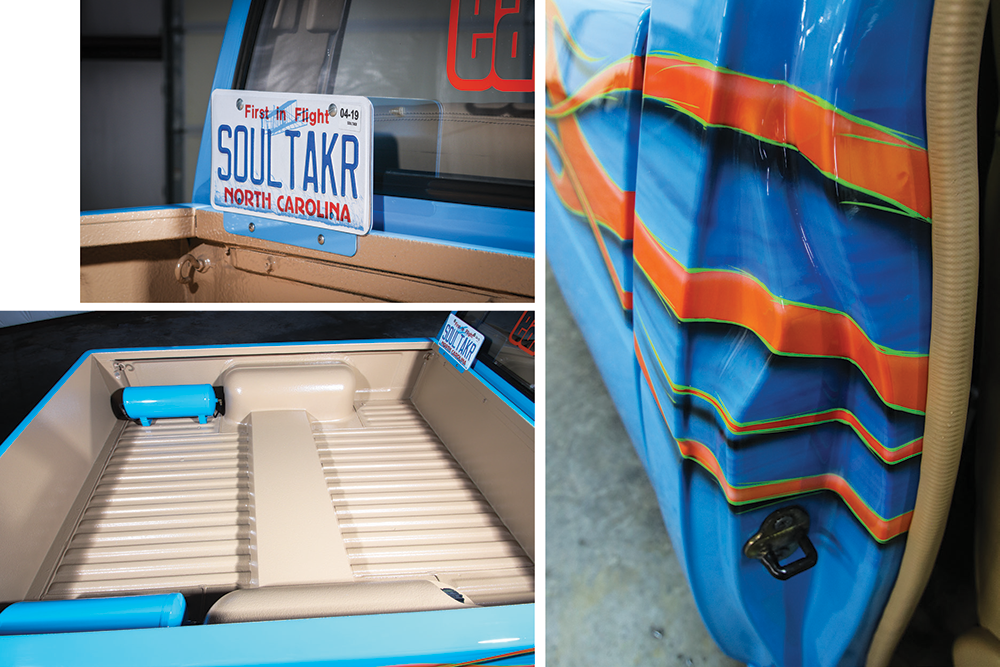
When it came time for interior work, James realized there were some things he would rather do differently, so he got in touch with Mr. Scrape Customs for a complete revamp. Starting with the Dodge Neon SRT buckets, yards of tan and brown leather were used throughout the cab, including the custom door panels. Custom enclosures house an assortment of CT Sounds speakers, which include 6.5-inch components and subs wired to CT Sounds amplifiers. Topping it all off is an OG Colorado Custom Fire billet steering wheel, billet window cranks and a billet shift knob.
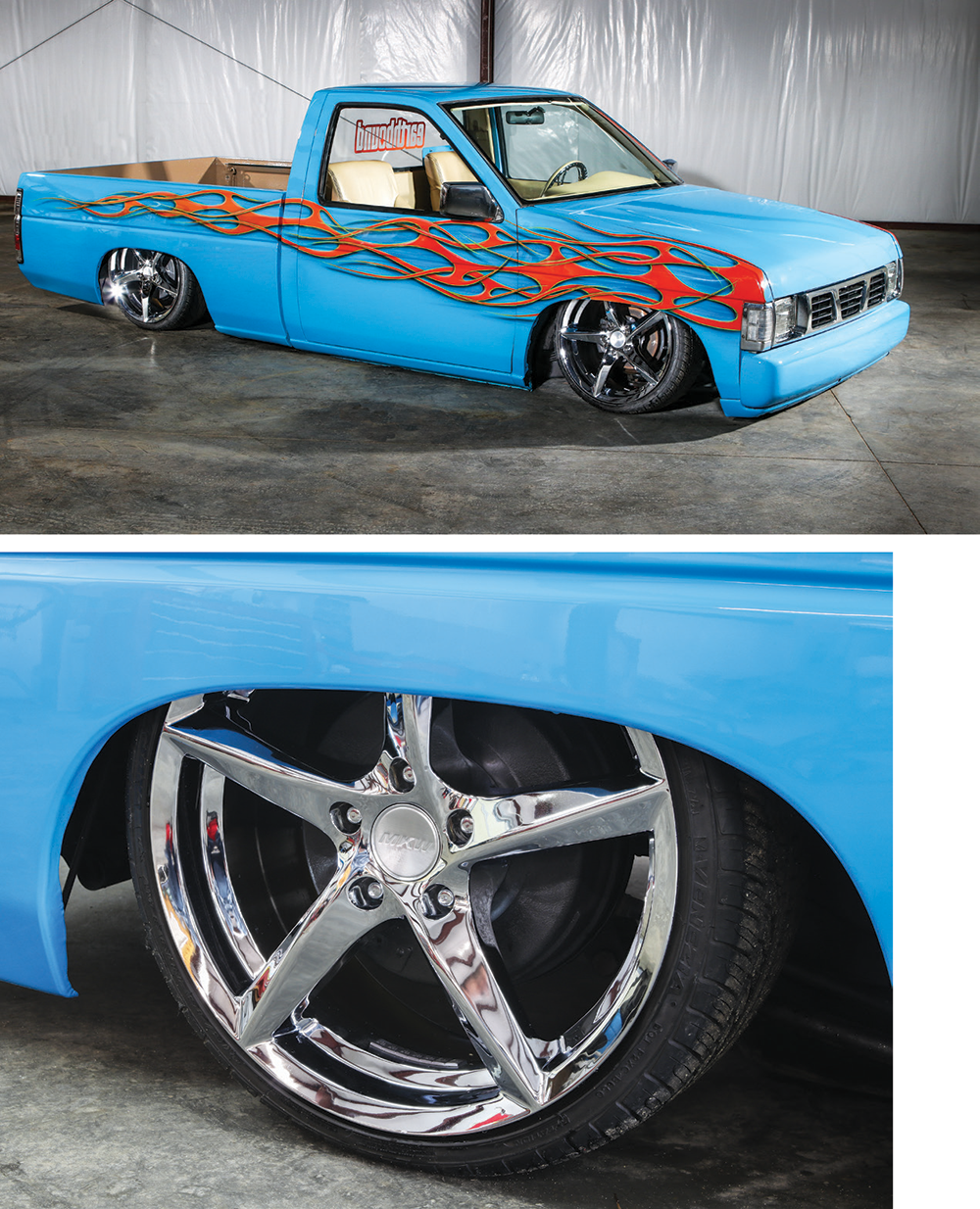
Since buying his Nissan in 2016, James has put a lot of time and money into bringing it back to life, and we’re glad he did. Not only has he gotten to enjoy it at shows like Camp ’N Drag, Battle in ‘Bama, and Slamfest, but he’s reminded us that hidden gems are out there waiting to be rediscovered. A lot of older builds deserve a second chance at life, and James’ Hardbody should be an inspiration to us all to be on the lookout for that long-forgotten diamond in the rough.
FREQUENTLY ASKED QUESTIONS
The Hardbody trucks came in various versions and configurations to cater to diverse needs:
This flexibility allowed potential owners to select the type of cab, bed length, and engine that suited their specific requirements.
For high schoolers in the 1980s and early ’90s, compact pickup trucks were often more than just a vehicle; they symbolized freedom and practicality. Unlike today’s preference for sedans or SUVs, many teens during this era saw compact pickups as their first step into adulthood. These trucks were budget-friendly and manageable in size, making them an accessible option for young drivers.
In essence, compact pickup trucks in the ’80s and early ’90s weren’t just vehicles; they were a rite of passage for many teenagers, marking the transition from adolescence to the independence of young adulthood.
Nissan Hardbody mini trucks are legendary in the world of off-road and utility vehicles. But what exactly earned them this “tough-as-nails” reputation?
Nissan Hardbody trucks earned their formidable reputation through a combination of exceptional durability, superior performance in challenging conditions, and straightforward, cost-effective maintenance. Their enduring popularity is a testament to these qualities.
The Nissan Hardbody saw several updates throughout its production years, maintaining its classic style while incorporating key enhancements. Over the years, it kept its distinctive shape, with each iteration reflecting subtle tweaks.
These updates ensured that the Nissan Hardbody adapted to both style trends and technological advancements while staying true to its rugged roots.
The Nissan Hardbody, also known as the D21, was succeeded by the D22 model for the 1998 model year. Initially, this replacement was closer in design to a mini truck. However, over the subsequent years, it transformed progressively into a midsize truck.
The Nissan Hardbody made its debut in the 1986.5 model year. This launch marked a transition period, as it coincided with the final phase of the Nissan 720 model. This overlap meant that a Nissan pickup from 1986 could be either a 720 or the new Hardbody, leading to some owners referring to their trucks as 1986.5 models.
Visually, the Hardbody set itself apart with a distinctive design. A key feature was the bold body line that ran seamlessly from above the headlights, extending through the door handle, and concluding midway through the taillight. This unique design element made it easy to distinguish the Hardbody from its predecessors and contemporaries.
Production of the Hardbody continued in Smyrna up until the 1997 model year, marking it as a staple in Nissan’slineup for over a decade.
The Hardbody offered several engine options, including a 2.4-liter four-cylinder and a 3.0-liter V-6. Initially, it featured throttle-body injected engines, which later evolved into multi-point fuel-injected versions.
The Hardbody trucks came in various versions and configurations to cater to diverse needs:
This flexibility allowed potential owners to select the type of cab, bed length, and engine that suited their specific requirements.
The Hardbody trucks were equipped with a range of engines throughout their production years (1986.5-1997):
Due to emissions regulations, the 1996 and 1997 models were only available with four-cylinder engines.
The engines could be paired with a five-speed manual or a three- or four-speed automatic transmission. Buyers also had the choice between rear-wheel drive and four-wheel drive, further enhancing the truck’s adaptability.
This comprehensive range of options and features ensured that the Hardbody trucks could meet a wide variety of customer needs and preferences.
The Nissan Hardbody offered a range of engines: a 106-hp 2.4-liter four-cylinder from 1986 to 1989, a 134-hp 2.4-liter four-cylinder from 1990 to 1997, a 140-hp 3.0-liter V6 from 1986 to 1989, and a 154-hp 3.0-liter V6 from 1990 to 1995.
The Hardbody trucks came in various versions and configurations to cater to diverse needs:
Nissan’s reputation for reliable compact trucks dates back to the mid-1930s when the company, known as Datsun at the time, began manufacturing trucks in Japan. As the company evolved, it began exporting vehicles to the United States, making a significant impact on the North American market.
Fast forward to the 1970s, and the company had already carved a niche in the North American market with the export of the Datsun 620 model. This compact truck gained popularity for its affordability and efficiency, appealing particularly to young, first-time buyers in the 1980s and early 1990s.
In the early 1980s, Nissan updated their offering with the 720 model. This iteration was notable not just for its design but also for its production, which took place in Nissan’s U.S. Facility in Tennessee. This move marked a significant moment in the company’s history, indicating a commitment to the North American automotive market.
The subsequent generation, known internally as the D21, began taking shape in the mid-1980s. This model was a result of design efforts based in San Diego, reflecting a blend of Japanese engineering and American market preferences. The D21 would go on to become iconic, particularly in its 4×4 versions, which combined durability with a compact form, making it a favored choice among young drivers and enthusiasts alike.
Through these developments, Nissan successfully transitioned from simple export models to locally influenced designs, solidifying its place in the compact truck segment in North America.
Share Link